
Does solving a Rubik's Cube increase IQ in children?
Of course, the magic cube motivates greater brain activity, and the constant exchange of information between neurons, which increases brain activity in children, and at the same time, their IQ.
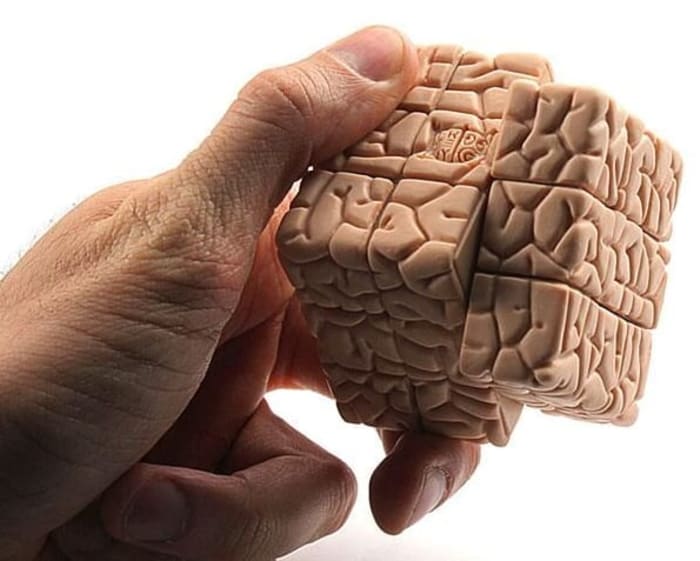
Here are several concepts and ideas that will help you understand how something considered a toy can have such an impact on our mental abilities.
- 1.- What is the Rubik's cube?
- 2.- Precursors to the Rubik's Cube
- 2.1.- Larry Nichols and his pocket cube
- 2.2.- Frank Fox and the spherical puzzle
- 3.- The famous Ernő Rubik's cube
- 4.- Famous actors and singers who use the Rubik's Cube
- 5.- Is it important to develop skills and mastery over the Rubik's Cube?
- 5.1.- Influence of the Rubik's Cube on our ability to solve problems
- 5.2.- Difference between men and women when assembling the Rubik's Cube?
- 5.3.- Rubik's Cube improves skills in children and teenagers
- 5.4.- Practice makes the master?
- 5.5.- What should my IQ would have to be to have the ability to correctly assemble a Rubik's cube?
- 5.6.- The Rubik's Cube and its influence on education
- 6.- Holly Riehl: pioneer in the formal incorporation of Rubik's Cube into education
- 7.- Success stories derived from the Rubik's Cube hobby
- 8.- God's famous algorithm
What is the Rubik's cube?
For many people, it's just a "toy". However, this curious implement does not turn out to be as simple as it seems at first glance, in essence, this item is a puzzle that has a peculiar cube shape, and an even more peculiar way of assembling. In order to achieve this goal, the 6 faces of the cube must be perfectly aligned in the color assigned to each face.
Such has been the reception of this product that, after almost 50 years of its creation, it remains one of the favorite puzzles of children and adults. The curiosity it generates, the challenge it means and its apparent simplicity have made it a total timeless success.
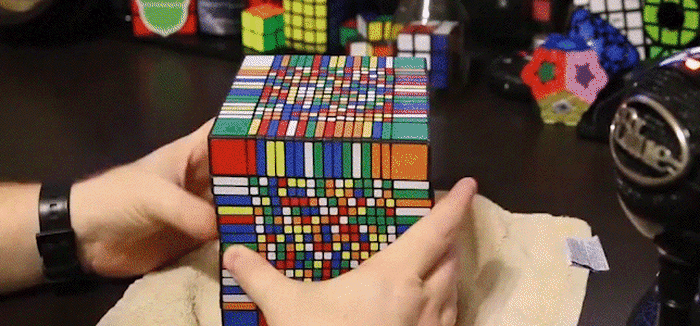
I'll leave you a piece of information:
Rubik himself took a month to successfully assemble his invention, after a series of tests and calculations. milenio.com
Precursors to the Rubik's Cube
This is how we call the people who invented and patented objects, doubtfully similar, to the famous cube; thus we have:
Larry Nichols and his pocket cube
We have the first attempt, or the closest thing to the Rubik's cube, in the 70s of the last century, with Larry Nichols, who invented a curious and enigmatic puzzle, which was made up to 6 faces.
A singular feature of the object created by Nichols is that the system used was neither gears nor shafts, but magnets. Something that clearly distinguishes it from any other puzzle model.
Later, on April 11, 1972, a few days before the official launch of the famous Apollo 11, Larry Nichols managed to register the creation of his toy, curiously, a couple of years before Rubik himself.
Frank Fox and the spherical puzzle
At the same time that the Nichols' cube was created and patented, on the other side of the world, located somewhere in the english city of London, Frank Fox was also encouraged to apply for a patent registration for a spherical object very similar but different. It was not a 2x2x2 system, anymore, this time it was a 3x3x3 system. However, this patent was only achieved at the beginning of 1974.
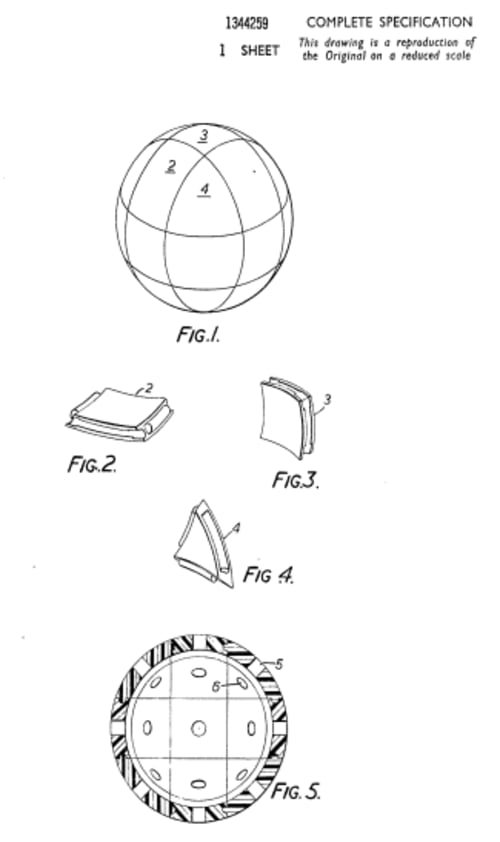
Now that we learnt some background, let's move on to the Rubik's cube:
The famous Ernő Rubik's cube
Rubik, back in the 70s, worked in a company related to art and creation of crafts in the city of Budapest, capital of the European country of Hungary.
It is believed that the famous cube was initially built as a toy or as a classroom tool mainly, in order to understand the 3D shape of some objects, in this case, the three-dimensional shape of a square, resulting in the famous cube.
Next, I'll show you one of the first prototypes of this famous cube made of wood and without colors, which is currently part of the itinerant scientific exhibition called Beyond Rubik's Cube.

I believe probably the most characteristic part of the cube is the contradiction between simplicity and complexity. I love the simplicity of the cube because it's a very clear geometrical shape, and I love geometry because it's the study of how the whole universe is structured. Ernő Rubik
However, today it is known that the real purpose of the "magic" toy was to simulate the task of moving independent parts of a variable structure, but with a permanent and invariable axis, we can say, a variation without modifying any of the essence, since, despite the interchange of the independent parts, the original shape of the cube was maintained.

This is how Ernó Rubik created an unusual puzzle toy. In addition, he realized its complexity when, in the interaction with his invention, he tried to return the independent pieces that he moved to their original place.
Apparently, Rubik obtained the patent for his invention in Hungary, in the mid-70s of the last century. Something curious happened when he tried to patent the invention internationally, since the current law back those days, asked him for a year of antiquity. That is why the company which Ernó Rubik worked with, decided to rename the magic cube to Rubik's Cube, leaving to the young Ernó Rubik a legacy for history.
In my teaching, I enjoyed creating models to clearly communicate my thoughts. Ernó Rubik
As a consequence of this novel launching of the magic toy on the market, the cube was quickly sold, being a popular object of purchase in the shops of Budapest, the city where the new “Rubik's Cube” was officially released nationally.
By 1980s, Rubik and the company that sponsored him reached an agreement with an important company in its sector, which allowed the worldwide relaunch of the curious cubic puzzle, getting to be present at important fairs in the famous cities of Europe. Even in the early 80s, it managed to position itself in the always difficult New York market.
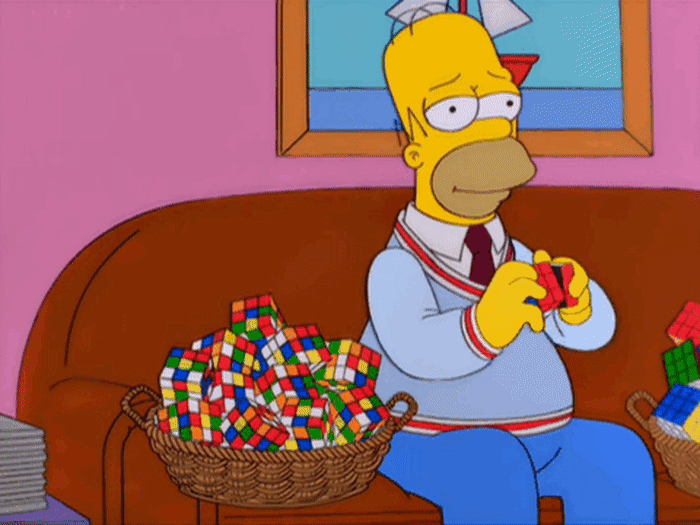
Despite the commercial success and the rapid popularity of the cube, its first problem arose: the cube had its own regulation on packaging and production in the different countries in which it was distributed, which led to attempts to modify the initial name, going from "Gordian knot" to the idea of "Inca Gold"; However, none of them was the chosen name, and he stayed with the name that we know until now, the famous “Rubik's Cube”.
The Rubik's Cube was no exception to the piracy problem, and given its popularity, (cheap) copies of the cube were counterfeited in large numbers.
After being relaunched in 1980 as the "Rubik's Cube", some 350 million were sold worldwide. bbc.com
Famous actors and singers who use the Rubik's Cube
Now that you know much more about the famous Rubik's Cube, its origin and precursors, I'll tell you about popular artists, among singers and famous Hollywood stars, have not only used the cubic puzzle, but are also experts in putting it together.
Here it is detailed list:
First we have Chris Pratt, the famous actor who played "Star Lord" from the acclaimed film Guardians of the Galaxy; who, according to his relatives, is a great fanatic of the assembly of the magic cube.
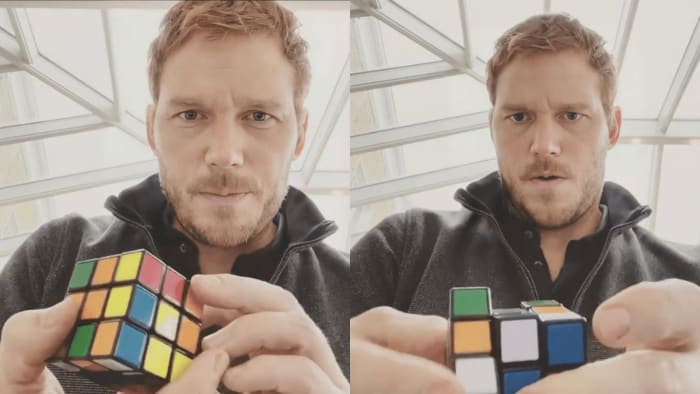
We also have Ryan Gosling, another famous Oscar-winning actor for best actor in 2017, also starring in famous films such as “La la land” and “Blade Runner 2049”, who has been seen on different occasions putting together the Rubik's cube.

Regarding the world representatives of modern music, we have Justin Bieber, the famous American singer It is another star who has shown his dominance over the cube. He has been seen "playing" with the magic cube since he was 10 years old.
And last but not least is the successful actor Will Smith, who is another Rubik's cube lover. Let's remember that this famous actor had to study the correct assembly of the cube, to perform his character in the famous movie "In search of happiness", resulting in him being an expert on it since then.
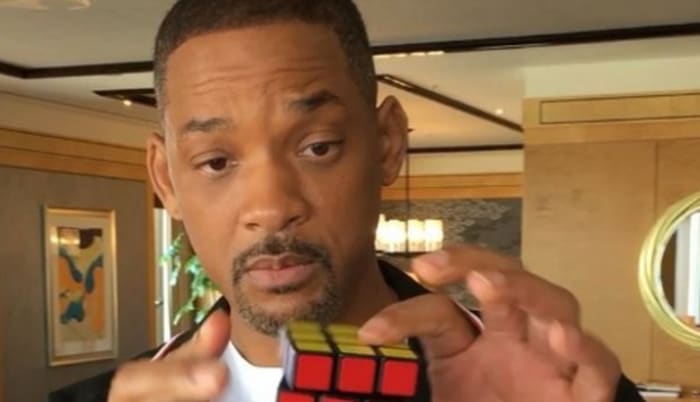
Regarding these figures, have you seen their movies? They are very good, I recommend them so that you can appreciate their ingenious talent. For this reason, it can be said that it is no coincidence that their success in their professional careers and their mastery in assembling the magic cube are a simple coincidence.
I hope that the information you have obtained will inspire you to develop your skills and intelligence.
Is it important to develop skills and mastery over the Rubik's Cube?
Of course it does, it has positive effects on our mental abilities. To give you a clearer idea, keep in mind the following points:
Influence of the Rubik's Cube on our ability to solve problems
In a publication made on November 23rd, 2020, on the important Spanish newspaper ABC, it is commented that the practice of assembling this cube helps to develop the ability to resolve conflicts.
The Diario ABC in consultation with the clinical psychologist and neuropsychologist Esteso Borja, reports that:
Solving a Rubik's cube requires skills such as sustained attention (concentration), reasoning, working memory, planning, and cognitive flexibility. Diario ABC
In addition, in the information that has been obtained, it is affirmed that the assembly of the famous cube is a mental exercise little more than necessary, and although it is not yet proven, said this exercise could favor to delay mental deterioration in human beings, being able to prevent diseases such as the unfortunate Alzheimer, a fact that should be studied on a larger scale by our scientific community.

Difference between men and women when assembling the Rubik's Cube?
It is necessary to stop for a moment in here, and think outside the box.
Continuing with the interview that the Spanish newspaper carried out with a prestigious psychologist, we ask ourselves, are there any differences between the way a man and a woman think in assembling a magic cube? To which the expert indicated:
It is a visuospatial task, in which the right hemisphere of the brain intervenes. In psychological studies of individual differences, it was shown that men had greater ability to rotate objects in space and spatial orientation, while women had greater command of language. However, these are focus group studies, so it does not mean that there are women with good performance in non-verbal tasks and men with good verbal skills. Abstract from an interview made by the Spanish newspaper.

Rubik's Cube improves skills in children and teenagers
The prestigious psychologist Esteso Borja also absolves us the following question: Does assembling the cube improve the cognitive abilities of children and teenagers?. He answered:
The IQ has a part that is inherited from the parents and another that we incorporate from learning or experience, so the ability to stimulate intelligence depends on the weight of the inherited part and on brain plasticity, that is, «it is greater during childhood and adolescence. Abstract from an interview made by the Spanish newspaper.
We can summarize it in 3 main benefits:
- It encourages creativity, since it is necessary to find different solutions in order to complete the puzzle successfully. At the same time, this develops the ability to resolve.
- It encourages patience and perseverance, as well as attention and concentration. The usual consequence of not having enough patience and concentration is that the child gives up before they can finish it successfully.
- Encourage the execution of strategies: they will have to create a very good strategy to be able to take all the necessary steps and finish it.
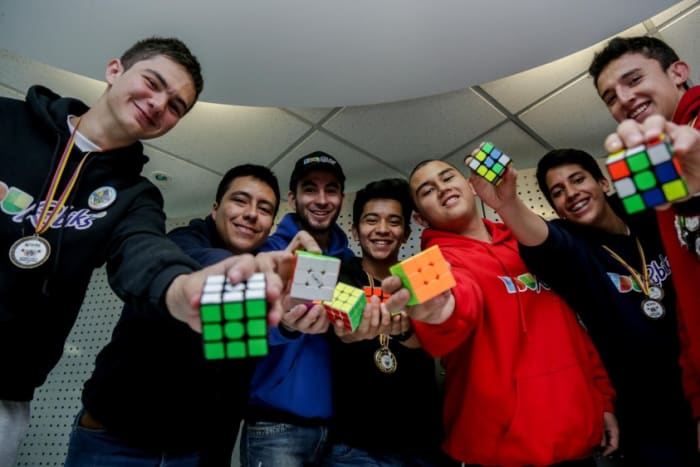
Practice makes the master?
Apparently, a cognitive task such as the Rubik's cube, even if it is complex, is not enough to develop intelligence immediately since it requires a diversity of stimuli, practice time and regularity
No one doubts that Mozart was a genius, not only because of his extraordinary ability for music, but also because of the amount of hours he devoted to his vocation and perseverance. Other activities such as physical exercise, which has been shown to improve oxygenation and brain function, learning a new language or playing an instrument, can stimulate different cognitive abilities. Borja Esteso, Specialist Psychologist in Clinical Psychology
Borja Esteso also advises that rather than aspiring to increase our IQ, we should enhance cognitive flexibility, that is, cultivate our ability to adapt to adversity and challenging contexts.
Probably, at some point you have asked yourself the following question:
What should my IQ would have to be to have the ability to correctly assemble a Rubik's cube?
Many people believe that you must be very intelligent to be able to solve or assemble a Rubik's cube, they even consider that this can be solved "only if you know enough maths". However, this is not the case, let's see why:
As a starting point, it can be said that it is not true that the field where you work, the job position you have or the greater or lesser degree of specialty in something are so relevant. Although it is true that they can influence a better development of the assembly of the cube, they are not necessarily factors that guarantee the certainty of being able to assemble a Rubik's cube.
What should prevail is the interest or curiosity for the new, the motivation not to fail in the attempt and obviously, the desire for self-improvement to want to achieve a goal.

According to the community of professional psychologists, the habits that a person follows are of greater importance, regarding the achievement of their goals, which is why the advisable thing will always be perseverance, patience and discipline in developing new methods and obtaining results.
With which we can conclude that, no matter the amount of studies you have carried out, it will not necessarily be fundamental to develop a Rubik's cube assembly, it is of greater importance that they follow healthy habits.
The Rubik's Cube and its influence on education
We are faced with a tool that could be an innovation within teaching materials in schools.
I'm saying this, based on the Howard Gardner's theory of multiple intelligences:
Intelligence is not a unitary set of specific capabilities, but a network of autonomous, relatively interrelated sets of different types of intelligences. The typical comment about what someone is good at (or what is worse) has to do directly with our more developed intelligences. Howard Gardner
Howard Gardner also indicates in his research that spatial and logical-mathematical intelligence, are positively affected with this classic.
There are games, if you can call them that, that collaborate with the stimulation of our intelligence in the same way, they are:
- Tangram
- Abacus
- Draughts
- Chess
Unlike the ones I mentioned before, the Rubik's Cube hides in the background of its pieces a potential that has not yet been fully explored with respect to the educational sector. In addition, it is quite a practical and comfortable object to use, as it is a single compact piece and certainly attractive for its colorful design.
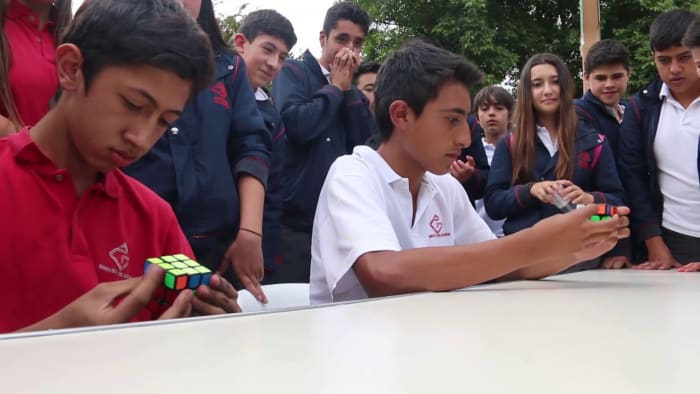
The influence of the Rubik's Cube in education is not surprising, since from its origins it was conceived for educational purposes.
Let's remember that it was invented by a sculptor, architect and designer from the Budapest School of Commercial Arts, as a kind of model to teach in a more didactic, interesting and innovative way to his architecture class students the three dimensions of space, with the purpose of facilitating spatial work.
At present, there have been many studies that validate the positive influence of the Rubik's Cube in children and adolescents specifically in their intellectual and psychomotor development.
Among the most obvious advantages we can mention the following:
- Improve spatial intelligence.
- Improves display capacity.
- Increases the ability to solve problems and make decisions.
- Promotes creativity.
- Stimulates the execution of strategies.
Those amateurs who already have some experience participating in activities associated with assembling the Rubik's Cube, such as competitions or simply dedicated time to this activity, are witness of how during their learning process the level of difficulty of assembling the cube has decreased and their level of understanding the operation of this "toy" has been increasing.
Perhaps they are not yet aware of what is really happening:
Their intelligences were progressing positively in their ability to cope with problems, and execute strategies simply and efficiently.
Since each time the difficulty offered by the cube was less, those fans sought greater and greater challenges. Challenges that perhaps before their long days of practice seemed impossible, such as:
- Solve cubes blindly
- Solve a cube while juggling
- Solving the cube in front of a mirror just by observing its reflection
Obviously, these activities demand a greater effort at a cognitive level, taking the abilities of these Rubik's Cube fans to higher levels.
We must also take into account that, since is a totally individual and independent object, similar to chess, the student is fully aware of his mistakes and successes. What allows the students to correct and accept their mistakes and of course motivate themselves to reach success.
In the process of learning and formulating algorithms that are part of the solution of the cube, several mental processes are involved, such as:
- Memory
- Reasoning
- Algorithm optimization, because as the practice devoted to this activity is greater, the amateur will realize that there are increasingly optimal ways to solve it.
- Spatial intelligence
And it seems that the benefits are infinite, because the skills that can enhance the practice of assembling cubes also influence mathematics.
As there are many variants that have been created since its conception, this toy is very useful for the study of various geometric shapes such as:
- Cubes
- Spheres
- Dodecahedra
- Tetrahedra
- etc
They are studied even in more advanced subjects with concepts such as permutations, probabilities, factorials, etc.
It is already part of another story, but without a doubt, for all the above, the cognitive skills stimulated by the practice of the Rubik's Cube also positively affect those who are dedicated to the field of software programming.

Holly Riehl: pioneer of the formal incorporation of Rubik's Cube into education
Holly is an American with more than 20 years in the gaming industry and is recognized for creating world-renowned brands such as Rubik's Cube, Trivial Pursuit, Monopoly, through new programs and pioneering products.
Holly heads the international program "You can do the Rubik's Cube", a pioneering program in its field that is dedicated to implementing educational strategies based on the use of the Rubik's Cube and its variants .
In addition, this program also offers trainings to teachers in order to prepare them in the use of the Rubik's Cube as didactic teaching material.
Something great about this program is that all affiliated teachers can constantly upload didactic educational materials to the web that they are working on and creating. This in order to build an increasingly large community at the international level.
Few schools in the United States have not included the Rubik's Cube as a formal teaching object yet. However, it is a growing practice.
The Altasierra Bilingual School, located in Seville, Spain, was the first to insert the Rubik's Cube into its curriculum as a learning tool and is even an active participant in the official international championships organized by the body that regulates everything related to Rubik's Cube and education, the World Cube Association.
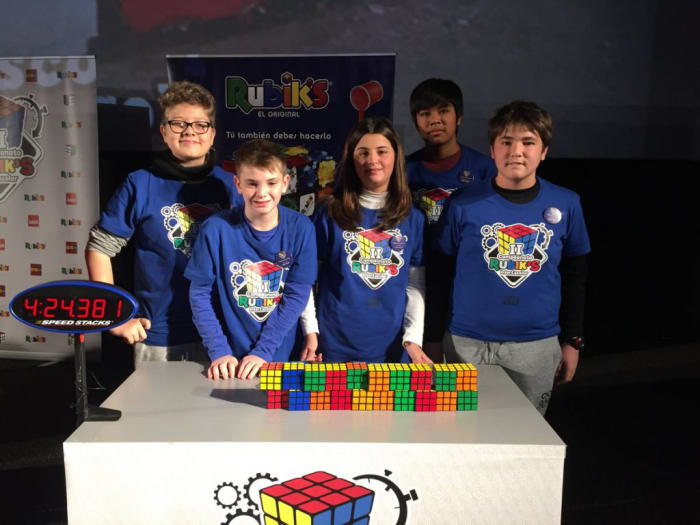
Success stories derived from the Rubik's Cube hobby
What better than real life cases to validate if, in fact, this famous cube can positively affect our mental abilities to the point of influencing our professional lives.
Next, I will mention the case of the current world champions and figures who have transcended in the Rubik's Cube building business. People who started with this hobby from a fairly early age and after having reached successes in this career, they have dedicated themselves to the scientific and logical mathematical heading.
- Feliks Zemdegs, current world champion, studies economics. Mats Valks, third in the world, has a degree in market analysis and gets a scholarship at Nanyang Technological University.
- Berta García, the third fastest person in the world in solving the cube blindly, wants to get a degree in mathematics.
- Jessica Fridrich, inventor of the method most used today, is an electrical engineer and self-taught of differential and integral calculus, professor at Binghamton University, New York.
These are only 3 young people out of many that there must be, in whom their love of the Rubik's Cube has had positive effects on their cognitive abilities and consequently their future tends to place them in fairly technical professions related to mathematics and strategy seeking.

God's famous algorithm
This famous concept is nothing more than a way to assemble the Rubik's Cube with the least amount of movements possible.
Actually it is not only applicable to the Rubik's Cube, its definition can be applied to any puzzle or mathematical game following the same idea of minimal steps or movements.
In 1981, Morwen Thistlewaite succeeded in showing by a complex algorithm that 52 movements were enough to solve any of the different combinations of the cube.
In 1990, Hans Kloosterman improved this number and managed to lower it to 42 movements.
Years passed for an increasingly optimal solution to be found.
In 2007, American researchers assured that the Rubik's cube could be solved in only 26 movements.
And finally, in July 2010, the team made up by Tomas Rokicki, Herbert Kociemba, Morley Davidson and John Dethridge manages to demonstrate through an algorithm, known today as God's algorithm, that it takes exactly 20 movements at most to solve any cube.
In these days, the record is held by a robot capable of assembling the Rubik's cube in 0.38 seconds, using the 20 movements established in the God's algorithm.
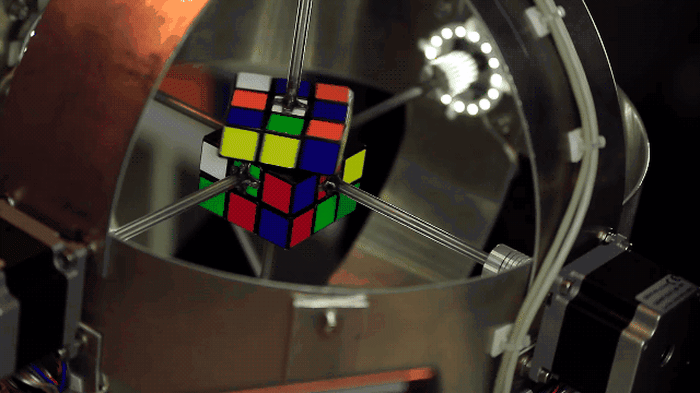
ONLINE INTELLECTUAL COEFFICIENT TEST

What is your IQ?












